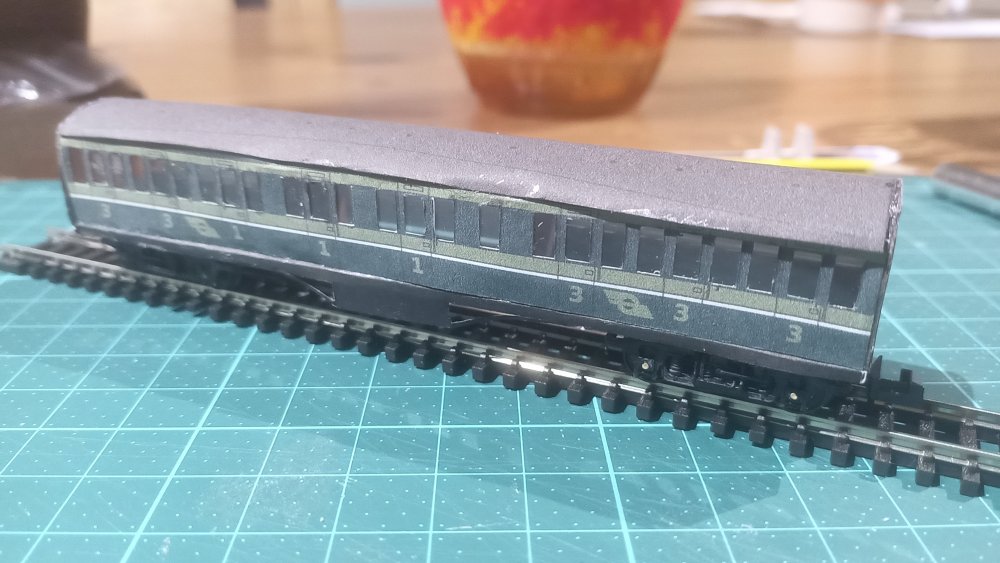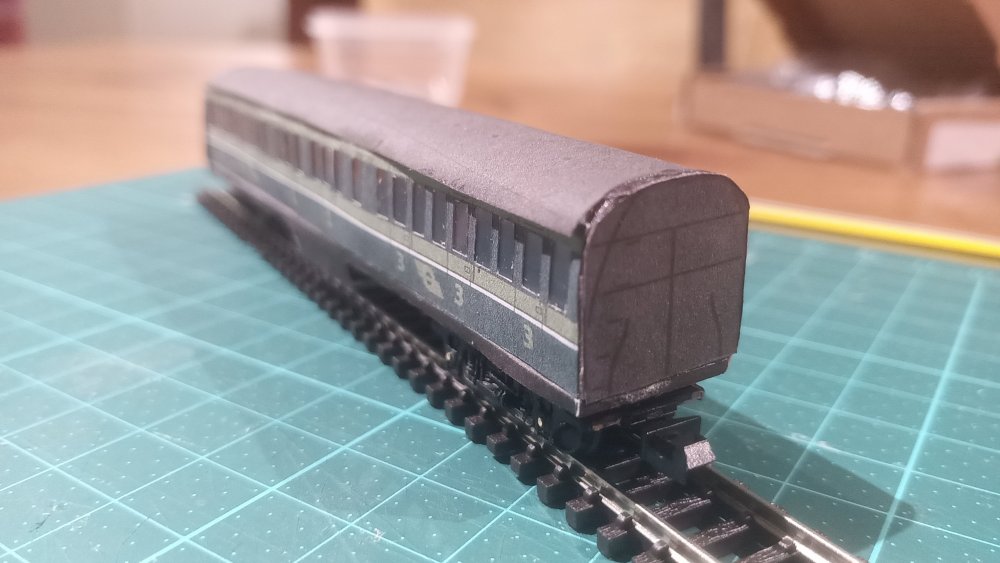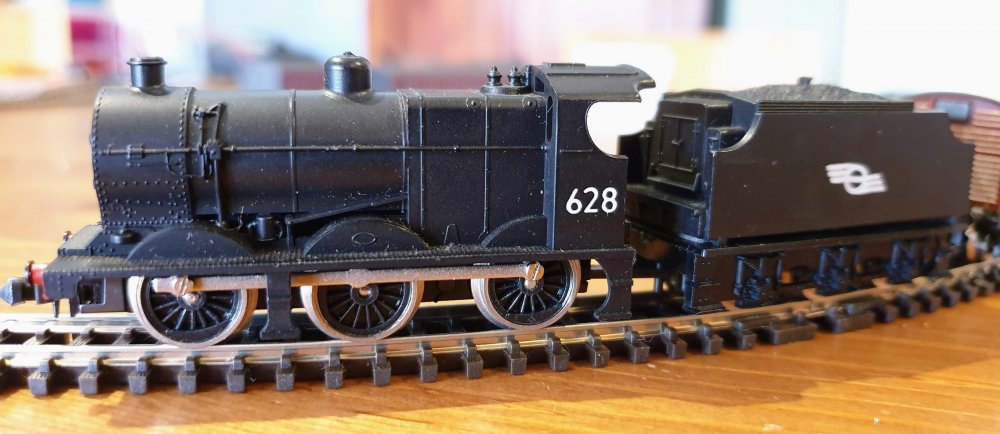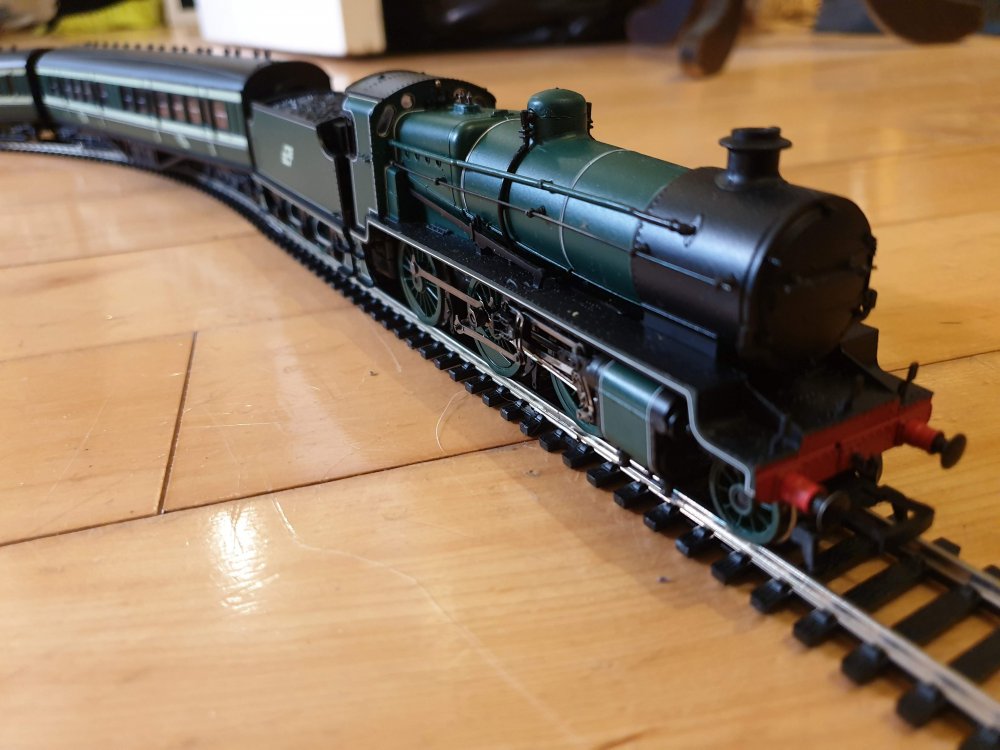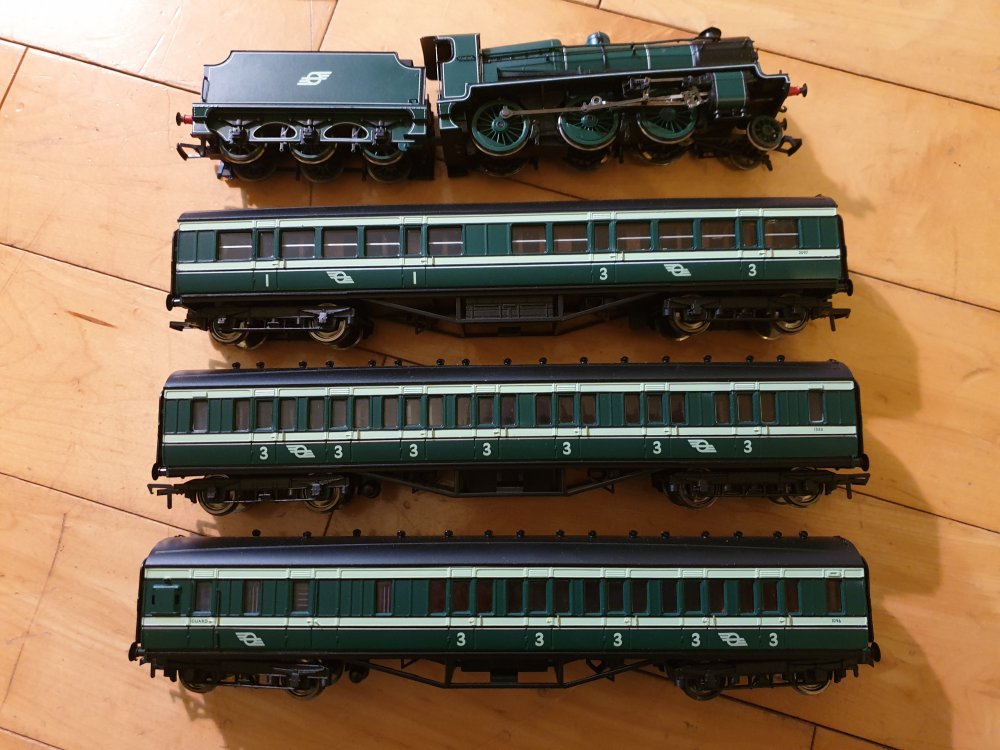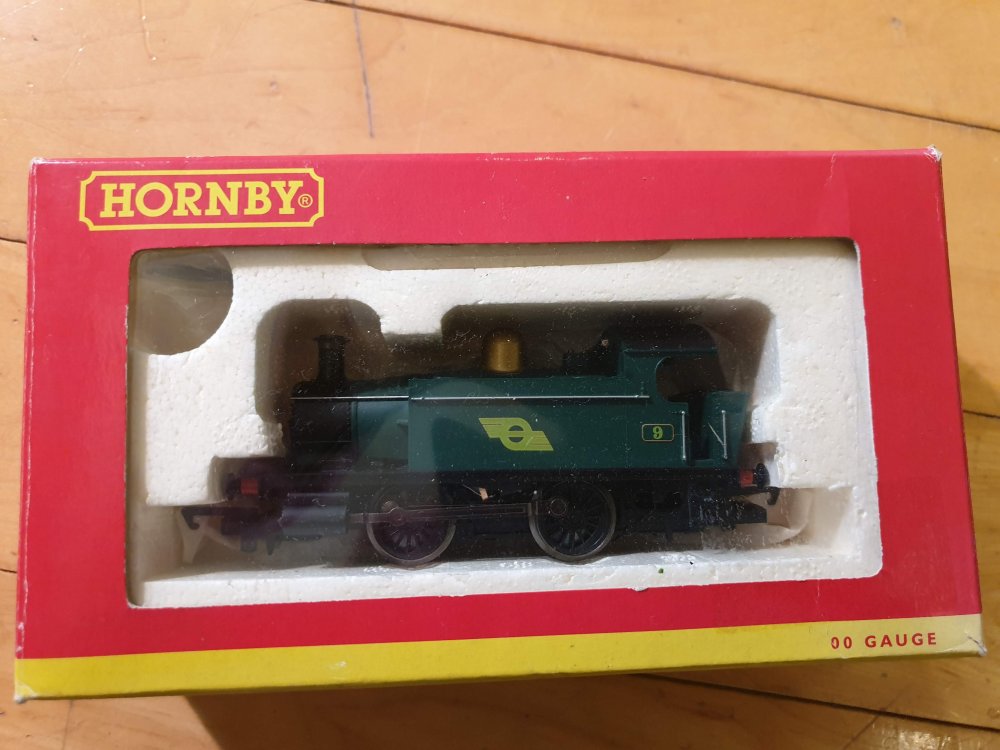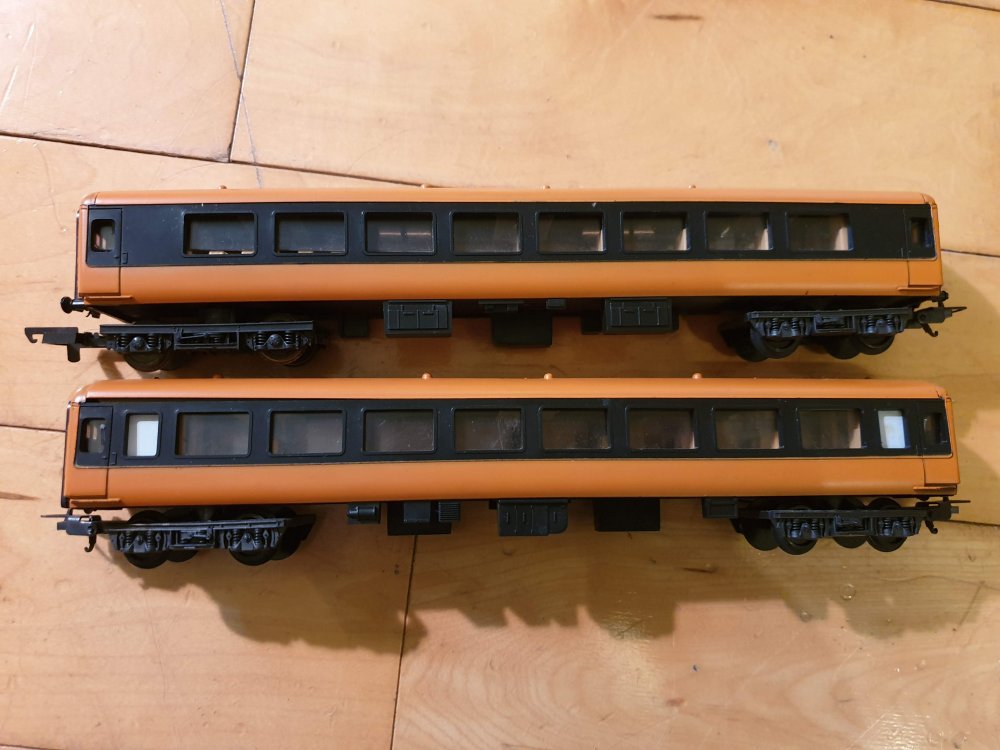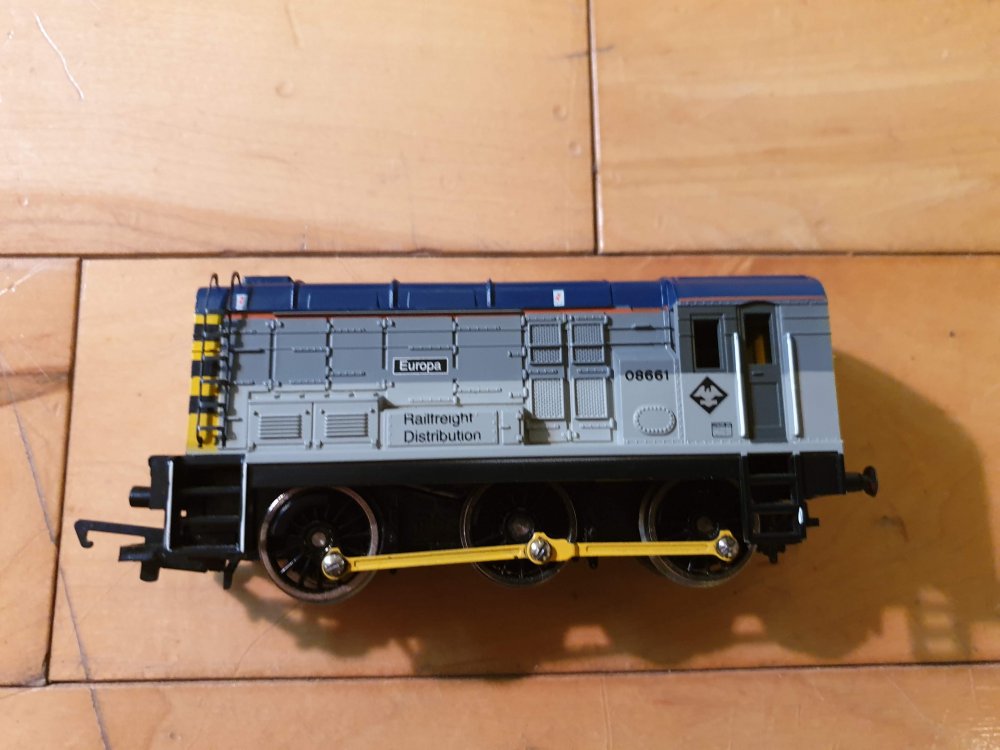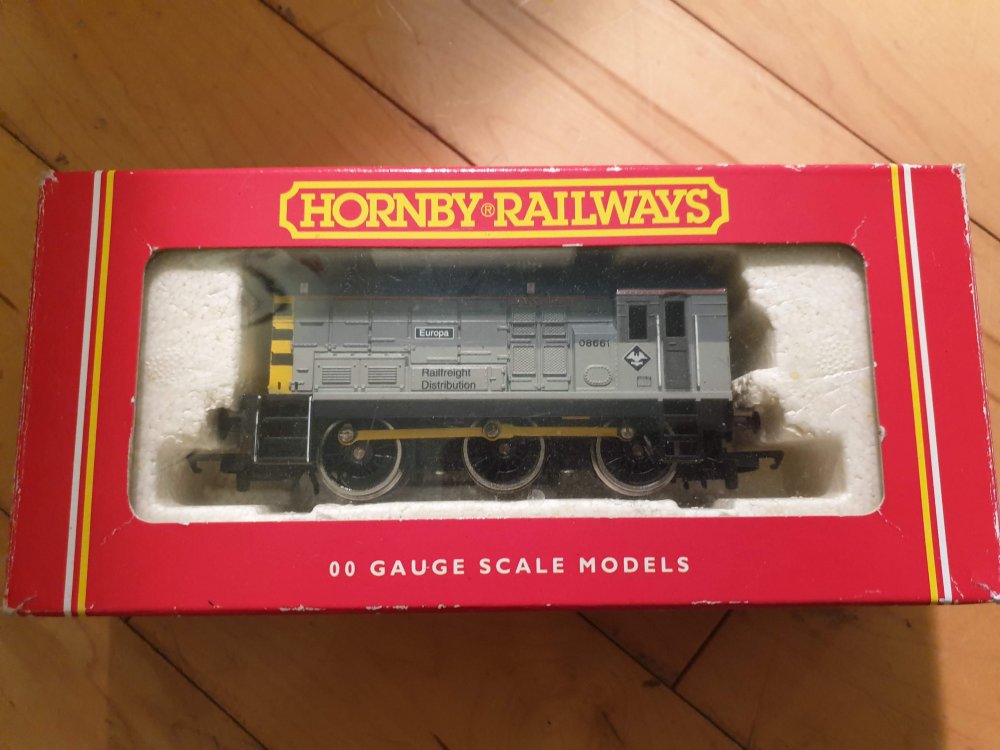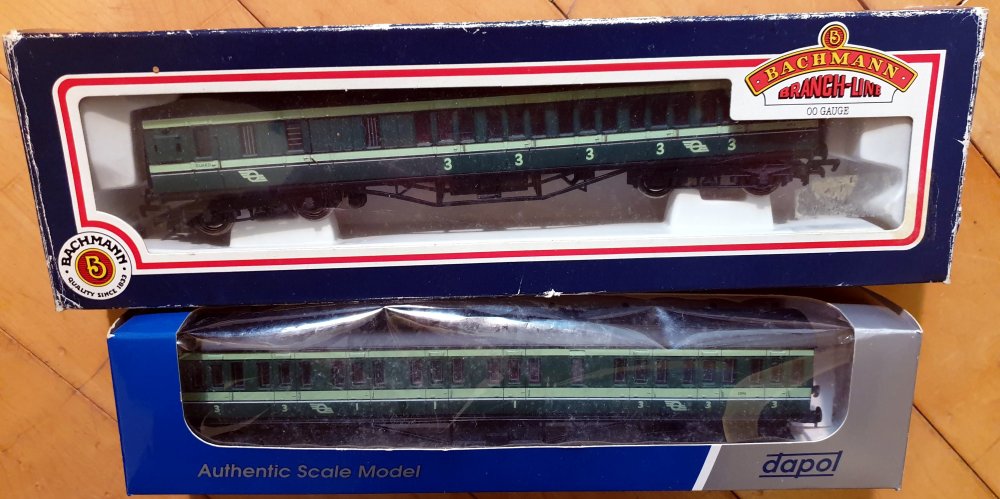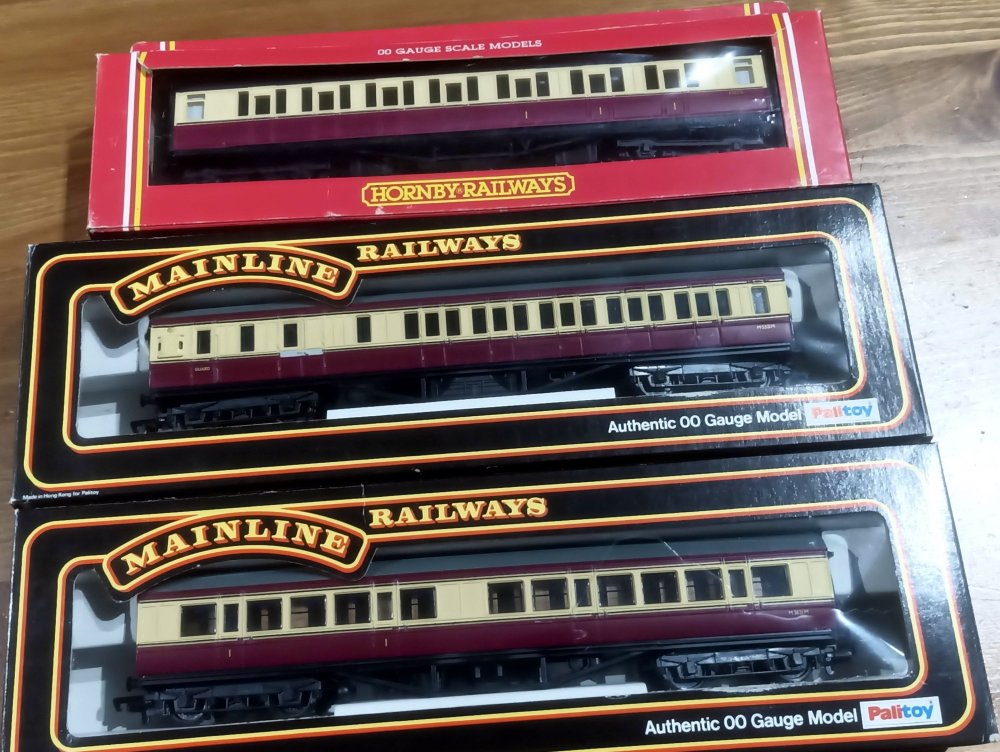
LostCarPark
Members-
Posts
35 -
Joined
-
Last visited
Recent Profile Visitors
The recent visitors block is disabled and is not being shown to other users.
LostCarPark's Achievements
-
Those look fantastic! The 3D printer layering is clearly visible, but they look pretty good despite it. I like the Valve designs, but I think Shapeways print resolution holds them back.
-
I can't fault the paint job of the Chris Dyer version, but a lot more work as gone into this version to get the correct doors and other details. To be fair, there's no way you could mass produce the changes, so that is probably about as good as it could be for a ready to run respray, and absolutely great that it's available.
-
Very nice job! Certainly much more convincing the the Chris Dyer version. Fantastic layout too.
-
There are two main types of consumer level printers: filament and resin printers. Filament printers work by melting a plastic filament and extruding plastic to build up the 3D object. They are limited by the diameter of the extrusion nozzle, and not really capable of fine detail in prints. However, they can produce very strong structural elements, so may be useful for making chassis and mechanical elements that don't need to be visible. Resin printers work with a bath of resin that sets when exposed to a certain light wavelength. In the past they used a laser, but now most of them use a LCD screen to set a whole layer at once, making them relatively fast. They can produce very fine layers and can produce incredibly accurate prints. However, they still print in layers, so there will always be some banding, but how you set up the model on the print area can dramatically affect how visible this is. There are also a number of industrial 3D printing methods, better suited to mass production, generally involving machines costing hundreds of thousands of Euros, so I suspect Shapeways uses one of these. I'm not sure how the detail of their output compares to a consumer resin printer.
-
Why 18.2mm? 1435mm/76 would be 18.88mm.
-
Here are some photos of my second attempt at a CIE 57' wood bodied coach. This time some shots of the construction. First I built up the coach body. I also cut the windows out of the side panels, and glued perspex behind. Next i attached the sides. Then the roof and ends. Cutting out all the windows is an absolute pain, but it certainly produces a more convincing result. Currently it's just resting on the bogies, so I'll have to figure out a way of attaching it before I can actually run it. I would like to figure out a way of cutting things out more accurately. I feel that at the moment it still looks a little home made, but with a little more precision, a rake of them could really look quite good on a layout.
- 19 replies
-
- 3
-

-
- rolling stock
- card
-
(and 1 more)
Tagged with:
-
Are you printing them yourself, or using a service such as Shapeways? I'm aiming to pick up a resin printer in the next few months, and have a couple of 3D locomotive models on the go that I'll be tinkering with. I expect it will take a few months to produce anything useful, but would be very interested in sharing 3D models, if you were willing to exchange designs.
-
This calls to mind a question that's been bugging me for a while... On my Lima N-Gauge loco, it has the same logo on both sides (the logo and number are also the wrong colour, but we'll let that go for now): As far as I know, on locos generally had the flying snail with the top wing pointing forwards, so the side above is correct, but the other side should be mirrored. Does anyone know if this was always the case, or were there exceptions?
-
Various OO Scale Trains for sale (the second batch)
LostCarPark posted a topic in For Sale or Wanted
Some more things for sale. First a Bachmann "Irish Railway" loco and coaches... 2-6-0 loco (unnumbered), 1st/3rd coach (number 2097), 3rd coach (1333), 3rd/brake (number 1096). €120 for the set. No box or track with them. Have HO style couplings. Hornby R2130 - Coras Iompair Eireann 0-4-0T, Industrial Locomotive - €50 Lima Black and Orange Coach - one OO style coupling, the rest are HO style x2 - €25 each Hornby R2008 - Railfreight, Diesel Electric Shunter Class 08 - missing back coupling, and body not properly attached as a result, but mechanism runs very smoothly - €15 Hornby R2008 - Railfreight, Diesel Electric Shunter Class 08 - boxed - €40 Plus some items still available from last week... Bachmann Silver 74701 - HO Passengar Cars, Irish Railways, Third Class (coach number 1095) - €40 Dapol - MAR1001 - CIE 1950s Coach - €40 Hornby R409 BR Ex LNER Composite Coach (Blood & Custard) - Used - €10 Palitoy Mainline 37-111 BR Corridor Coach (Blood & Custard) x2 - Used - €15 each I've more to list, but it's time consuming to go through everything, so it will probably take a few weeks to get through it all. Hope these are of interested to people here. James-
- 1
-

-
The "flying wheel/snail" was out of use before I was born, and I never heard the term before the internet. It may have originally been a derogatory term, but like many such names it stuck, and I don't think most people using it today use it with any negative tones. There's certainly a humourous intent, and for me it just comes across as a fun description of the logo. Should we avoid using it?
-
This logo was used from 1994 until sometime around 2010, and is sometimes referred to as the "3 pin plug" logo. The following logos have been used: "Flying snail" CIE - 1945-63 (used by DUTC from 1941) "Broken Wheel" CIE - 1963- (modernised version still used by CIE) "IR" 4 rails/set of points logo from 1987, when IÉ became a separate company from CIÉ "3-pin Plug" above, 1994-2010ish [edit: corrected from 1987 in original post]. Irishrail.ie "Swoosh", used fairly briefly from around 2010-2013. Phased out because it wasn't bilingual. Current IÉ logo (ugliest of the lot). Used since 2013. [note: edited to tidy up images.]
-
I'm just getting back into this after a long break, but my impression is there is no single right answer. By "best" do you mean the best for running trains on, or the best looking, or perhaps best selection of track elements, or best in terms of easy to fit together? I believe most of the major manufacturers produce very good track. I'm sure there are brands to avoid. I would look at the range of components availble and the general look of the track when deciding. I believe that you should avoid mixing brands, as they tend to have slightly different track profiles, which may cause derailments where different brands meet. Finally, if modelling an Irish railway, be aware that "HO" 16.5mm gauge track is significantly under-scale for Irish broad gauge, and if you want the best looking track at OO scale, you need to go to 21mm. To the best of my knowledge, there's no off the shelf track available at this gauge, so you have to build your own.
-
Amazing display. Well done. Although I feel you should have all the steel girders inside Pearse for the roof replacement.
-
Lovely bit of work. Hope you'll post some photos of it painted.
-
Looking back through this thread, it seems the catalogues had an Irish insert. I'm not sure if mine ever had it, but it doesn't now.
.png.c363cdf5c3fb7955cd92a55eb6dbbae0.png)


